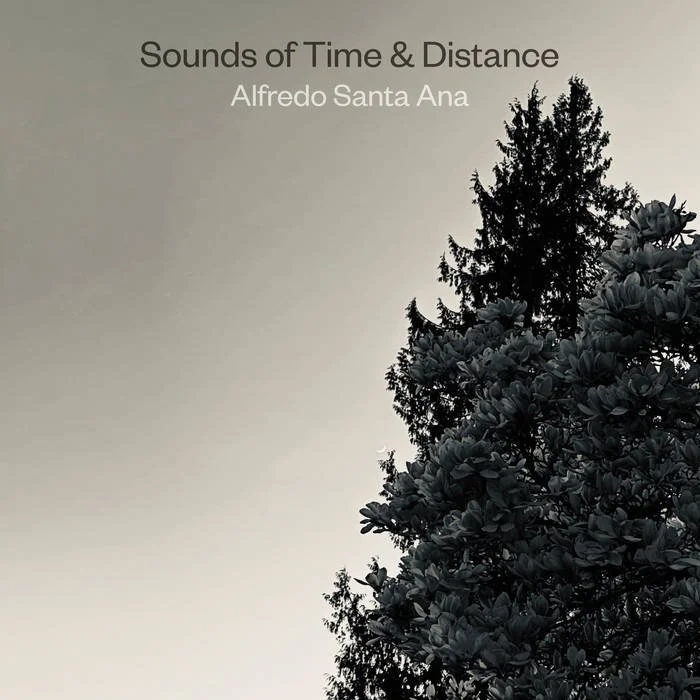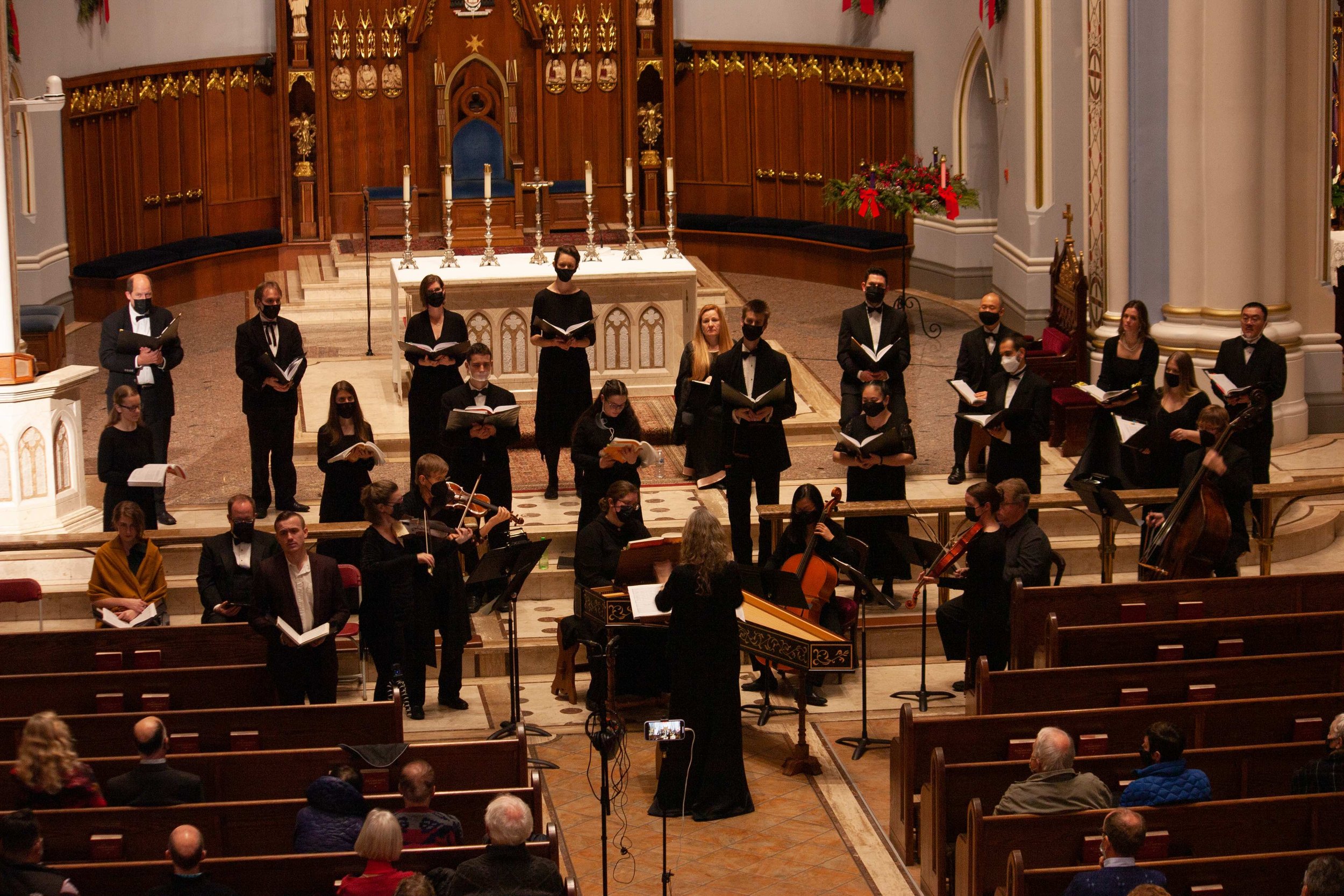Vancouver's Alfredo Santa Ana sculpts music with Sounds of Distance & Time
The Mexico City-born composer plays guitar and embraces electronics on new album
Alfredo Santa Ana.
Alfredo Santa Ana and Michael Ibsen will livestream the release of Sounds of Distance & Time on November 26 at 9 am via YouTube
FEATURING A CLASSIC of American minimalism, an original composition that quotes the Mexican national anthem, some jittery math rock, archival recordings from his youth, and an assortment of virtuosic guests, Alfredo Santa Ana’s Sounds of Time & Distance is a fairly comprehensive survey of the things that interest this acclaimed Vancouver composer. It’s also an autobiography in multiple guitars, ranging from handmade nylon-string instruments to long-gone teenage favourites to a flashy Gretsch electric.
“This is a bit of a coming out as a guitarist, for me,” says the Mexico City–born musician, who has written dozens of scores but only rarely sets foot on stage himself. “I feel so incredibly, like, imposter syndrome, with having been a composer and all of a sudden going into playing a little bit more. I mean, it’s really hard to listen to yourself, especially to call something a guitar album. You get this sort of SteveVai/Joe Satriani vibe from that sometimes. And I’m not a good guitarist or performer, but what I play doesn’t have to be virtuosic.”
Santa Ana is unduly modest. It’s true that his playing isn’t going to scare the gods of technical metal, but on Sounds of Time & Distance he does set himself up against jazz innovator Pat Metheny and acquits himself more than competently. When Metheny premiered Steve Reich’s Electric Counterpoint in 1987, it was hard to imagine anyone improving on what was a flawless rendition of a rhythmically demanding masterpiece—and it’s probably fair to say that Santa Ana doesn’t. What he has done is just as difficult: he’s made it his own, bringing out the African rhythms that were Reich’s primary inspiration in a bright and lively interpretation of the score.
It probably helps that it’s a piece that he’s loved since very early on in his compositional career.
“The course was Music Theory 3, and it was my second year of university, and we were finally entering into 20th-century music, post 1945,” Santa Ana recalls. “So we had studied a little bit of Stockhausen, and we had done a little bit of Stravinsky and Paul Hindemith and all that stuff, but we were getting into New York in the ’60s and ‘70s, and the professor just played Electric Counterpoint for us. It’s not like I had an out-of-body experience, but when I heard it it just made so much sense. Everything about this piece just created this feeling of ‘Oh, I understand pulse. I can hear what’s happening in the music. I can understand the phasing that’s taking place; I can understand the entrance of these voices, and when something switches.’
“It’s such an energetic piece,” he adds. “I was studying music in Missouri, and you have to drive a lot in the States. And this was such beautiful driving music that I just kind of fell in love with it immediately, and with minimalism in general.”
Prior to his U.S. sojourn, Santa Ana’s primary engagement with music came through rock—which might surprise those who know corrido, ranchera, and danzón but aren’t aware of Mexico’s electric underground. “I started playing guitar because, like a lot of people who have an older brother, he started playing guitar when I was probably about eight or nine,” the composer explains. “I played piano a little bit, and I took piano lessons, although that was for classical music. But when I saw him play guitar…
“The guitar gave me not just access to music, but access to a kind of cultural phenomenon that was happening when I was growing up in Mexico City,” he continues. “Between 1989 and 1993, there was an explosion of rock ’n’ roll music in Mexico—and in all of Latin America, really. This whole new generation of alternative-rock bands was happening in conjunction with what was happening in the States, with grunge. You didn’t need to be an incredible player; you could just learn three or four chords and jam out with friends. So I did that.”
Santa Ana is wise enough to know when he does need incredible players. Among the guests on Sounds of Distance & Time are two remarkable duets: the Made in Canada pairing of classical guitarists Michael Ibsen and Nathan Bredesen, and the McGregor-Verdejo Duo of flautist Mark Takeshi McGregor and electric guitarist Adrian Verdejo. On “Foundation Visit High Scatter”, Ibsen and Bredesen are tasked with realizing a modular score that touches on some of the classic gestures of 20th-century guitar music while reassembling them in surprising ways.
“In that particular piece, one of the things that I really enjoyed working with these two guys was that I told them ‘Do not hear or look at each other’s part,’” Santa Ana reveals. “One of them was in Utrecht, in the Netherlands, and the other was in Ottawa, and they each recorded their parts completely unaware of what the other person was doing. And then when they sent me their guitar parts, I put them together in a digital work station here at home. So they didn’t know if they were performing against the rhythm, or against different electronics or whatever, but they were very gracious about kind of letting me take control.”
“Wave Remote”, which McGregor and Verdejo perform, is perhaps even more heavily marked by Santa Ana’s enthusiastic, yet subtle, embrace of electronics. Both musicians use looping devices to layer sound, and Verdejo also employs an eBow, an under-utilized electromagnetic tool that allows the guitar to sound like a bowed string instrument.
In the studio, Santa Ana says, digital technology has liberated his compositional gift. “The immediacy of hearing back something the way you want to hear it is, for a composer, so valuable. With pen and paper or music notation, once you fix the score up, then you have to wait for the rehearsal. And then in the rehearsal you hear all of the different mistakes that you’ve made, and you have to correct them and then go back to the ensemble… It’s just such a time-consuming process. But when you have technology that allows you to hear something immediately, you feel a little bit more like a sound sculptor—and I guess it’s what keeps me excited about music.”
That, he adds, and playing guitar in a band, which is where Square comes in. The “multicultural and overeducated” quartet, which gets one brief feature on Sounds of Distance & Time, is a way for Santa Ana and his fellow composers Edward Top and James Maxwell (plus indie-rock ringer Nathan Dillon) to blow off steam, while showing that “serious” music doesn’t have to be either quiet or deadpan.
After releasing three digital EPs, Square (which plays the Wolf Bar in Maple Ridge on December 10 and the Roxy Cabaret on December 22) is readying an LP of its own, so we’ll catch up with that project then—but it’s fair to expect more surprises.















